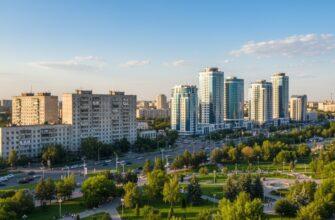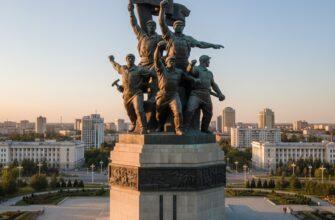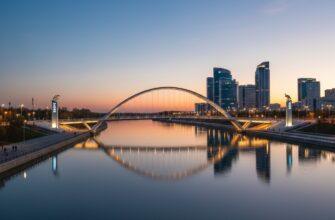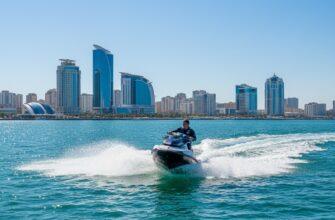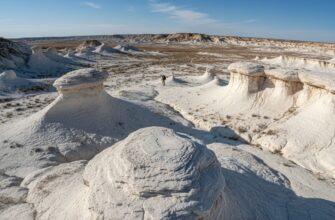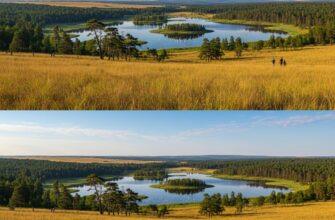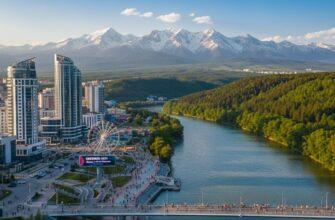Big Almaty Lake: A Complete Visitor’s Guide
Big Almaty Lake, often called the “Pearl of the Tien Shan,” is one of Kazakhstan’s most stunning natural attractions. This alpine lake with its striking turquoise waters has become a must-visit destination for travelers to Almaty. However, accessing the lake has changed in recent years, and visitors need updated information to plan their trip effectively. This comprehensive guide covers everything you need to know about visiting Big Almaty Lake, from its location and history to practical tips for making the most of your experience.
Overview of Big Almaty Lake
Big Almaty Lake is a breathtaking natural reservoir located in the Ile-Alatau National Park, approximately 15-28 kilometers south of Almaty city. Sitting at an altitude of 2,511 meters (8,235 feet) above sea level, the lake is surrounded by majestic mountain peaks including Sovetov, Ozyorny, and Tourist. What makes this lake particularly special is its mesmerizing turquoise-blue waters that change color depending on the season and weather conditions.
The lake was formed thousands of years ago due to tectonic activity and glacial movements. Over time, melting ice created this natural reservoir, which today serves not only as a tourist attraction but also as an essential water source for the city of Almaty. Beyond its ecological importance, the area houses a scientific research station and an astronomical observatory, as its high-altitude location provides ideal conditions for space research.
Historically, locals refer to the lake as “Josalykol” (Жосалыкөл), where “Josa” is the name of a grass and “kol” means lake in the Kazakh language.
Is Big Almaty Lake Worth Visiting?
Absolutely! Despite some access challenges, Big Almaty Lake remains one of Kazakhstan’s premier natural attractions and is well worth the effort to visit. Surrounded by towering snow-capped peaks of the Tian Shan mountains and giant Tien Shan firs, the scenic beauty of the area is unparalleled.
Visitors consistently describe their experience as “surreal” with “beautiful views” that create unforgettable memories. The pristine alpine environment, with the lake’s striking turquoise waters reflecting the surrounding mountains, creates a serene and picturesque scene that photographers and nature lovers will particularly appreciate.
Many travelers count their visit to Big Almaty Lake as “one of the highlights” of their time in Kazakhstan. The contrast between the bustling city of Almaty and this peaceful mountain lake just an hour away makes it a perfect day trip destination for those wanting to experience Kazakhstan’s natural beauty without venturing too far from urban amenities.
Location and Accessibility
Where is Big Almaty Lake Located?
Big Almaty Lake is situated approximately 15-28 kilometers south of Almaty city in the Ile-Alatau National Park. The lake is relatively close to the Kyrgyzstan border, although special border passes are not required for visiting the lake itself. The proximity to Almaty makes it an accessible destination, with the journey from the city center taking about 45 minutes to 1 hour by car under normal conditions.
Can You Drive Up to Big Almaty Lake?
As of 2025, road access to Big Almaty Lake is restricted for private vehicles and taxis. This is a significant change from past years when driving all the way to the lake was possible. Currently, visitors can only reach the last eco-post or checkpoint by vehicle, after which they must either hike approximately 8-11 kilometers to the lake or arrange alternative transportation.
Current Access Status
The lake itself remains open to visitors, but how you can reach it has changed. There are several options:
- Private Tours: Joining a guided tour is currently the most convenient way to visit the lake, as tour operators may have special arrangements for transportation beyond the checkpoint.
- Taxi + Hiking: Take a taxi from Almaty to the last checkpoint, then hike the remaining distance
- .
- Electric Bike Tours: Some companies offer electric bike tours from the Ayusai Visit Centre, which can be a fun alternative for those with intermediate cycling skills
- .
- Local Transport: At the checkpoint, local drivers offer transportation services to the lake for approximately 10,000 tenge per person, though some visitors have reported finding less expensive options (around 3,400 tenge) by waiting for passing vehicles
-
.
How to Get to Big Almaty Lake
From Almaty City to the Checkpoint
- By Taxi: The most direct option is to take a taxi from Almaty city to the checkpoint. Using the Yandex app is recommended for reliable service
- . The journey takes approximately one hour and costs around 2,000-3,000 tenge from central locations like First President Park. Some visitors arrange for their taxi driver to wait (4-5 hours) and drive them back to the city.
- By Public Transport: Take bus number 28 from First President Park to the HPP-2 stop (ГЭС-2). From there, you’ll need to catch a taxi or try hitchhiking to reach the Ayusai visitor center and then continue to the checkpoint.
From the Checkpoint to the Lake
- Hiking: From the checkpoint, you have two main options:
- Follow the asphalt road (longer but easier, approximately 11 km)
- Take the shortcut along the water pipeline (shorter at about 7-8 km, but steeper and more challenging)
- Local Transport: At the checkpoint, you can hire local vehicles to take you up to the lake viewpoint for about 10,000 tenge per person. Some visitors have had success finding more affordable rides from passing vehicles for around 3,400 tenge per person.
- Electric Scooters: Some visitors report that electric scooters are available for rent (approximately 20,000 tenge for 2 hours), which can be pre-booked online.
Hiking to Big Almaty Lake
Route Options
- Road Route (Easier but Longer):
- Distance: Approximately 11 km one way
- Terrain: Wide, two-lane asphalt road with a gradual incline
- Difficulty: Moderate, suitable for most fitness levels
- Advantages: Easier walking surface, more gradual ascent, safer in wet conditions
- Note: You can take shortcuts at certain points to reduce distance
Pipeline Route (Shorter but Steeper):
- Distance: Approximately 7-8 km one way
- Terrain: Steep slopes along and sometimes on top of the large diameter water pipe
- Difficulty: Challenging, requires good fitness and balance
- Advantages: Reduces hiking distance by about 2-4 km compared to the road route
- Caution: Can be slippery and potentially dangerous in wet conditions
Hiking Duration
- Uphill trek: Typically takes 3-4.5 hours from the checkpoint to the lake, depending on fitness level and route chosen
- Downhill return: About 3 hours for the 12 km journey back to the checkpoint
- Total hiking time: 6-8 hours round trip if hiking both ways
It’s advisable to start early in the morning (around 9-10 AM) to have enough time to enjoy the lake and return before dark.
What to Bring
- Passport: Essential as the lake is near the border, and guards may conduct passport checks
- Water and Food: No shops or restaurants are available during the hike or at the lake
- Appropriate Clothing: Weather can change quickly in the mountains, and temperatures are much cooler than in Almaty city (potentially 0-1°C in April despite warmer city temperatures)
- Sturdy Footwear: Hiking boots or trainers with good grip, especially if taking the pipeline route
- Insect Repellent: Particularly during tick season (spring and early summer)
- Camera: For capturing the stunning views
- Cash: For transportation, entrance fees, or unexpected expenses
Seasonal Variations and Best Time to Visit
Summer Experience (June-August)
During summer months, the lake displays its famous turquoise color most vividly. The temperature is pleasant for hiking, though significantly cooler than in Almaty city. Summer weekends are extremely busy with local visitors, so weekdays are strongly recommended if visiting during this season.
Electric bicycle rides to the lake are available during summer and can be an enjoyable way to reach the destination.
Winter Experience (December-March)
In winter, the lake freezes over, creating a completely different but equally stunning landscape. The road to the lake may be more difficult to navigate due to snow and ice, and temperatures can drop significantly. Proper winter clothing and equipment are essential during this period.
Spring and Autumn (Best Times to Visit)
According to multiple sources, the optimal times to visit Big Almaty Lake are:
- May-June: When the road is clear but the lake may still be partially frozen, creating a beautiful contrast. The mountain freshness during this period is described as “incomparable”.
- September-October: When glacier melts turn the water a dazzling turquoise color, and the autumn foliage adds additional beauty to the landscapes.
Regardless of season, weekdays (especially Tuesday through Thursday) are strongly recommended to avoid crowds, as weekends attract many local visitors.
Rules and Restrictions
When visiting Big Almaty Lake, be aware of the following important regulations:
- Lake Access: Visitors cannot approach the lake directly and can only view it from the designated viewpoints along the road, as the lake serves as a drinking water source for Almaty.
- Swimming: Strictly prohibited due to the lake’s status as a water reservoir.
- Camping: Not allowed in the vicinity of the lake.
- Border Controls: Since the area is close to the Kyrgyzstan border, passport checks may occur. Always carry your passport when visiting.
- Photography: Allowed and encouraged, but respect any restricted areas marked by signs or indicated by guards.
- Environmental Protection: As part of a national park, visitors must follow standard environmental protection rules: no littering, no damage to vegetation, and respect for wildlife.
Nearby Attractions
While visiting Big Almaty Lake, consider including these nearby attractions in your itinerary:
- Shymbulak Ski Resort: A popular destination in both winter (for skiing) and summer (for hiking and scenic views).
- Sunkar Falconry Center: Features entertaining shows with eagles and other birds of prey daily at 5 PM (except Mondays), making it a perfect stop on your way back from the lake.
- Ayusai Visitor Center: Located on the way to Big Almaty Lake, it offers information about the area and serves as a starting point for hikes to the Bear Ravine waterfalls (approximately one hour of hiking).
- Big Almaty Peak: For experienced hikers, trails lead from the lake to various peaks and glaciers, though some may require special permits from the Migration Police (OVIR).
- Abandoned Observatory: Located just a few minutes from the lake, this old abandoned observatory can be an interesting additional sight to explore.
Practical Information
Altitude
Big Almaty Lake sits at an altitude of 2,511 meters (8,235 feet) above sea level. The significant elevation gain from Almaty city (which is at about 700-900 meters) means that some visitors may experience mild altitude-related symptoms. It’s advisable to take the ascent slowly, stay hydrated, and be aware of any unusual symptoms such as headaches or shortness of breath.
Distance from Almaty
- Total distance: 15-28 kilometers from Almaty city center (varies depending on exact starting point)
- Driving time: 45-60 minutes to the checkpoint under normal conditions
- Hiking distance from checkpoint: 8-11 km one way (depending on route)
Communication and Navigation
- Mobile Coverage: Generally available at the lake with possible blank spots along the way. Tele2 SIM cards reportedly have limited or no internet connection at the top.
- Maps: 2GIS or Yandex Maps are recommended over Google Maps for navigation in the area. Downloading offline maps before your trip is advisable.
Wildlife
If you start your hike early (around 6-8 AM) from the water pipes, you might spot marmots in the area. Be aware that during spring and early summer, ticks are present. Wearing light-colored clothes, using insect repellent, and avoiding sitting on grass can help prevent tick bites.
Conclusion
Big Almaty Lake represents one of Kazakhstan’s most accessible and breathtaking natural wonders. Despite some access restrictions and the effort required to reach it, the stunning turquoise waters set against snow-capped mountains make it an essential destination for nature lovers, photographers, and anyone visiting Almaty.
While the journey to the lake has become more challenging in recent years with road closures, the reward of experiencing this pristine alpine environment more than compensates for the effort. Whether you choose to join a guided tour, hike independently, or try one of the alternative transport options, a visit to Big Almaty Lake offers a memorable escape into the natural beauty of the Tien Shan mountains.
For the best experience, visit on a weekday during May-June or September-October, start early, and come prepared with appropriate clothing, sufficient water, and your passport. The magical color-changing waters of this mountain gem will surely become one of your most treasured memories of Kazakhstan.


